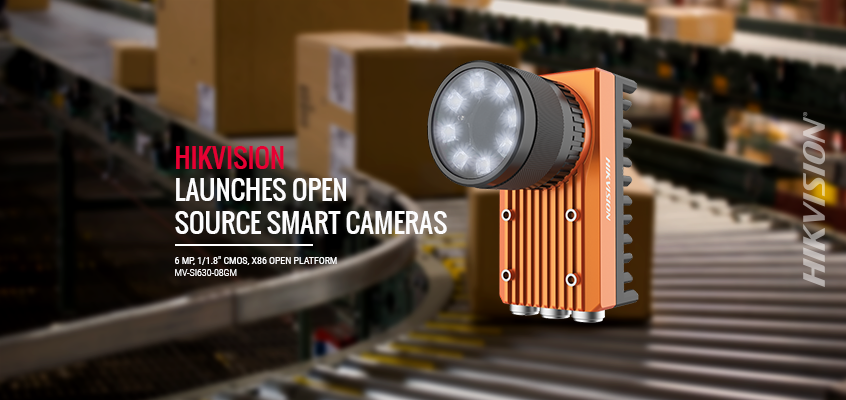Hikvision Launches Open Source Smart Cameras with Intel x86 Processor – Offers Integrated Camera, PC, Lens and Light Source

Hikvision’s robotics and machine vision team has launched brand new x86 Open Source Platform Smart Cameras, designed to offer customers greater flexibility and to deliver an integrated camera, personal computer, lens and light source.
“Hikvision’s Open Source Smart Cameras use the Python and Sony IMX series global/rolling shutter CMOS sensor, with up to 80 frames per second to meet the most demanding motion conditions in the field. This product adopts embedded x86 architecture, which makes it easier and simpler for users to transplant algorithms and software into the camera to create an integrated vision system solution,” said Eddie Xiu, Hikvision robotics product manager for North America.
He adds that the cameras come with Microsoft Windows 7 embedded, enabling the use of third-party software and increasing options for customers to optimize both hardware and software. In addition, the cameras are easy to transplant, and support Hikvision’s industrial camera SDK as well as third-party software such as Halcon and NI.
Integrated structure, aviation interface, and built-in controllable light source with optional lens covers the entire machine with IP67 protection level, facilitating on-site wiring to meet complex and harsh industrial environments. The camera also supports VGA and USB expansion interface, provides three optocoupler isolated inputs and three isolated outputs, and can be equipped with a running status indicator.
For more information about the Open Source Smart Cameras, click here. For more about Hikvision’s machine vision solutions, visit the robotics page online here.
